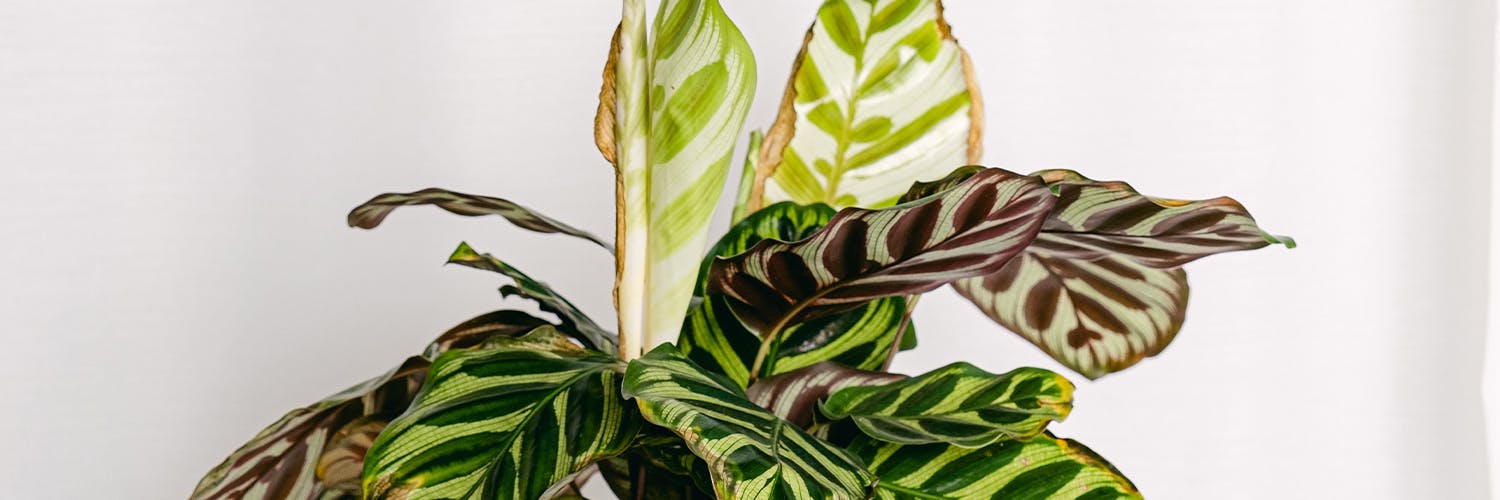Why do plant leaves turn yellow? Tips to fix it
You have bought a plant that is supposed to be easy to care for, such as a Pothos or a Raven Plant. You've taken the effort to learn the basics of care. One day you wake up and notice that instead of having a beautiful and very green plant, it has turned yellow.

You've bought yourself a plant that's supposed to be easy to care for, such as a Pothos or a Crow Plant. You've worked hard to learn the basics. One day you wake up and notice that instead of having a beautiful and very green plant, it has turned yellow.
Before you panic and resign yourself to throwing it away because it's dead, check out this guide that explains the reasons why plant leaves turn yellow and how to fix it.
The yellow
color in plant leaves has a name: chlorosis. This occurs when the leaf lacks chlorophyll, which is the nutrient that the plant manufactures for food and which is responsible for the color of the plant.
The problem is that if there is not enough chlorophyll, photosynthesis will not occur properly, so the leaf will dry out and fall. In addition, a leaf with chlorosis is more susceptible to pests.
If the problem is not fixed, then the plant could die. Chlorosis can occur from a variety of causes, so you'll need to check your plant and find out which one applies:
- If
almost all of your plant's leaves have turned a deep yellow color, even across the surface, you're probably overwatering it.
If you have watered as recommended for your type of plant, it may be that the substrate is not draining well and mud is forming. There's a very simple way to check this: touch the earth with your hands. If the soil is very wet, it does not move, but is caked, forming mud, it means that it does not have good drainage.
On the other hand, if the soil is dry and your plant is unevenly yellow, it may not be getting enough water. When this occurs, the plant gets rid of the leaves to prevent transpiration and save the little water it receives.
- Lighting problems
To photosynthesize, the plant requires sunlight. If it's in an area that's too shady for its species, then you'll notice that the leaves that are in the darkest or shady part turn a very pale yellow, almost white.
Now, too much light can also be detrimental to certain types of plants that need to be grown in shade or semi-shade. An example of this occurs with the leaves of Zamioculcas and Kalanchoe daigremontiana, which turn yellow if left in direct sun.
- If
planted has a pH that is incompatible with the needs of the plant, iron absorption may be affected and iron chlorosis may occur. You'll notice this problem when checking the leaf, which will turn yellow but the vein will remain green. This problem is typical of acidophilic plants, such as rhododendrons, azalea, camellias and hydrangeas.
The main compounds that plants absorb to synthesize their sustenance are phosphorus, potassium and nitrogen. Nitrogen enhances the green color of the leaves and contributes to growth, while phosphorus and potassium act directly on the roots and flowering of the plant.
This can be seen in the Monstera deliciosa, the corn plant and even in the pots when they have spent too much time in the same pot, which begins to become small and the substrate has exhausted all the nutrients.
- Nematodes and other pests
Nematodes are microscopic worms (about 0.2 mm) that attach themselves to roots, disrupting the transport of nutrients. It is very difficult to tell if a plant is being attacked by these pesky bugs, especially if it is planted directly in the ground. The plant becomes weak, loses its leaves, which turn yellow. It is most common in fruit trees and bulbous plants.
Other viral infections can attack your plant. If you see yellow spots, misshapen stems, battered leaves, and discolored flowers, you may be looking at a diseased plant. In this case, the best thing to do is to treat it with a fungicide or discard it, if you see it very badly. This is as a preventive measure, as this can be transmitted to other plants.
How to fix yellow leaves on plants?
If the problem is- watering:
Rectify the watering patterns, to see if the problem is that you are watering too much or too little. Otherwise, the substrate must be checked. For small or potted plants, check that you are using the right type of substrate for the plant and add gravel to the bottom to facilitate drainage. Check that the drainage holes are not clogged. It is also possible to mix the soil with some river sand to improve its permeability.
- If the problem is lighting,
check the ideal conditions for your type of plant. Plants with a lot of sun can't be in the shade, so move them to a sunnier spot. Shade lamps should not receive direct sunlight, you should also relocate them.
- If the problem is iron chlorosis
, in this case the substrate of the plant must be balanced. You can buy iron chelate, a powder that you can add to the soil, or look for a specific fertilizer for the type of plants that require a more acidic pH.
- If it is a lack of
A specific fertilizer or nitrogen tablets, which you have to bury in the substrate before watering, will be enough to replenish the nutrients in the substrate. In case the plant has grown and you see the roots sticking out, it is essential to transplant it to a pot with more space. Don't forget to fertilize regularly to avoid this problem.




